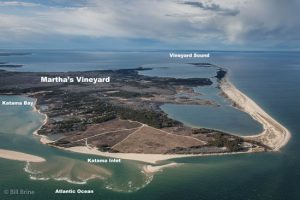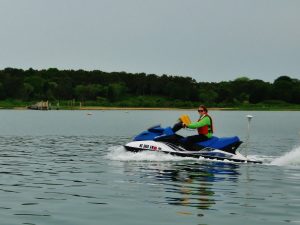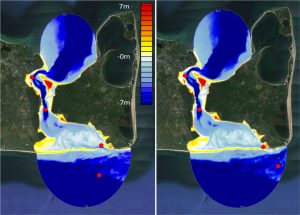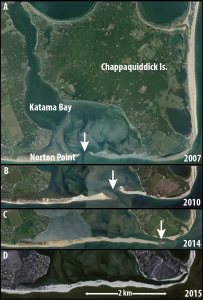Mapping Katama Bay’s Restless Sands

Katama Bay has two inlets. Water pours in from Vineyard Sound through Edgartown Channel, and from the Atlantic Ocean through Katama Inlet. The size and geometry of Katama Inlet changes frequently and has a big impact on the circulation in the Bay, as well as its bottom contours.
The size of Katama Inlet runs on a 10-15-year cycle, ranging from an opening a few kilometers wide to a very small narrow opening to completely closed.
A Dynamic Environment


Specific populations that will benefit from this research:
- Harbor Masters: The survey saves the town money and provides valuable information required for dredge permits
- Aquaculture growers: Growers now have updated maps of current patterns in the Bay, which are very useful when siting their equipment.
- Scientists: Driven by curiosity, scientists are interested in how the tides, waves and currents work together. The results gleaned from the Katama survey will aid the larger study of ocean dynamics.
- Department of Defense (DoD): Understanding the dynamics in a system such as Katama Bay is important for defense. The data will help DoD model the tides, currents and water depths in a hostile environment where conditions are similarly shifting and unpredictable.

